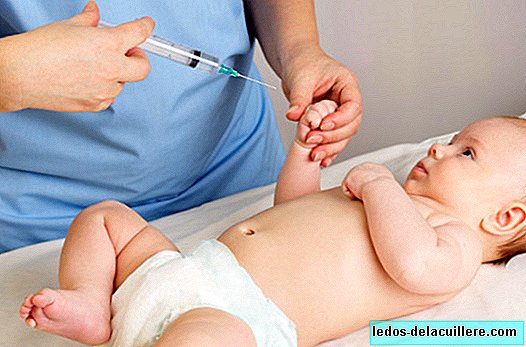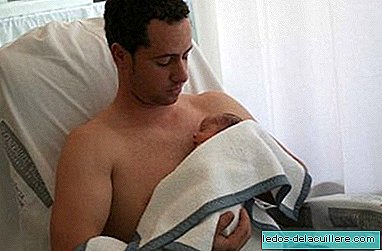Vaccination is a necessary procedure to protect our children from preventable diseases, but we cannot deny that it is going badly. It is a stressful moment, both for them and for us who see them suffer.
It is normal that the idea that a needle is going to prick them causes anxiety in children, so we will give you some methods recommended by the AEP to relieve stress and pain from punctures of vaccines in infants and children, and which are the most recommended according to their age.
Newly born

"Tetanalgesia":
It is a colloquial term that is used to describe the calming effect that breastfeeding has on children. The World Health Organization includes breastfeeding in its recommendations for childhood vaccination, since its advantages have been scientifically proven while the baby receives vaccinations or during other medical procedures that may cause pain.
Breastfeeding babies while being punctured reduces crying time by an average of 38 seconds, compared to babies who are not breastfed, according to scientists. They checked that breastfeeding distracts, comforts and calms babies, because the endorphins in breast milk would act as analgesics.
Skin with skin or hug them
The hug is highly recommended to lessen the sensation of pain and give relief, according to the AEP. And whenever possible, skin-to-skin contact in mother-kangaroo position has proven effective in painful procedures and can be performed during vaccinations.
Distraction techniques
The old trick of distracting them usually gives good results. They feel less stress if they are distracted by images, sounds, songs, etc. You can use your favorite toy, a book, music or sing to distract your baby at the time of the prick.
Give sweet liquids
Administering sweet liquids has proven its analgesic utility during vaccine administration. It is a measure that is usually recommended when you can not breastfeed the baby. It is recommended to dissolve an envelope of sugar in a glass with a finger or two of water (25% sucrose) and administer approximately 2 ml, little by little, with a syringe or dropper, in the baby's mouth, about 2 minutes before the injection.
It is a timely measure if the child is going to undergo a vaccination or a painful procedure, should not be taken as usual every time the child feels discomfort or pain.
Topical anesthetics
Local anesthetics in the form of cream can help relieve the pain of injections. It should be applied an hour before in the area (s) where you will receive the puncture in a small extension of skin. Make sure the cream is suitable for infants. In Spain, cream analgesics must be prescribed by the doctor.
Small children

Prepare it psychologically
If you can already understand it, anticipate what will happen with truthful information but without scaring it. It is not a good idea to do it too early or lie about the procedure or tell him that it will not hurt. A little hurts, but it will be fast and mom or dad will be there to make it more bearable.
Distraction techniques
For young children, distraction techniques also work very well. To what we commented with babies, we can also add to see drawings or a video on the mobile phone, which will help divert the child's attention and make vaccination less bothersome.
Avoid lying
Better upright sitting on the couch or better yet, in the arms of their parents. You will have to hug him holding him firmly but gently.
Topical anesthetics
As in babies, consult with the pediatrician the option of applying analgesic cream on the thigh or leg, depending on where the vaccine (s) will be applied.
Older children and teenagers

Prepare it psychologically
Even if you are older, you should explain in advance what will happen and answer all questions you have about the procedure. Why they will give you that vaccine, what diseases it prevents, etc ...
Distraction techniques
Distraction is still a good idea to reduce stress before or during the procedure. You can hear your favorite music, entertain yourself with games or videos on mobile devices, take deep breaths ...
Sitting position
The sitting position is the most recommended in these ages, because it combines the psychological advantages of the upright trunk position, while preventing the risk of dizziness that incorporates from the lying position or standing.
Topical anesthetics
In these ages, the use of cream anesthetics can also provide a psychological preventive effect of stress due to fear of punctures and could help children and adolescents with "needle phobia."












